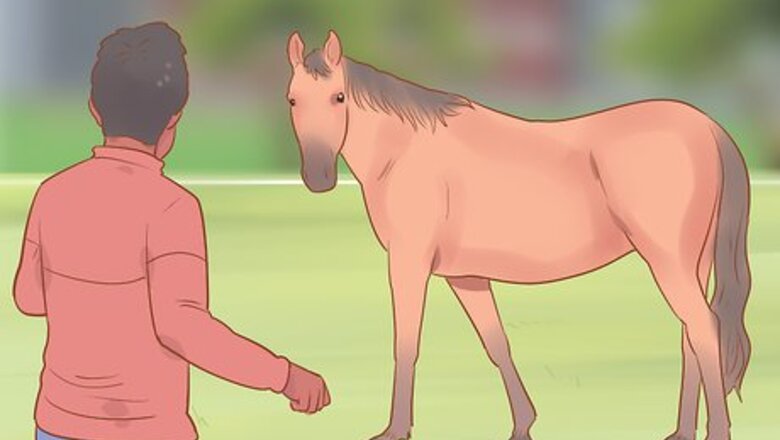
views
Approaching a Horse
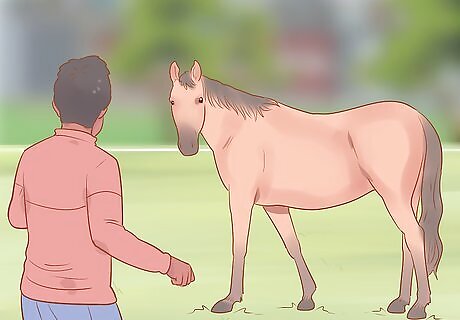
Walk towards the horse from the front and at an angle. When approaching a horse for the first time, try to walk toward the horse’s left shoulder so that your path of approach forms a 45-degree angle with the horse’s neck. If you walk to it straight on towards its face, or from behind, you are out of its field of vision. The positioning of the horse’s eyes on the side of its head creates a blind zone directly in front of and behind it. Approaching a horse in its blind zone will startle it. If your only choice is to approach from the rear, speak softly so it can hear you coming. You can tell the horse is aware you're there because its ears will face backwards but will still be erect. Try to walk up to the horse at an angle that it is able to turn its head and see you coming.
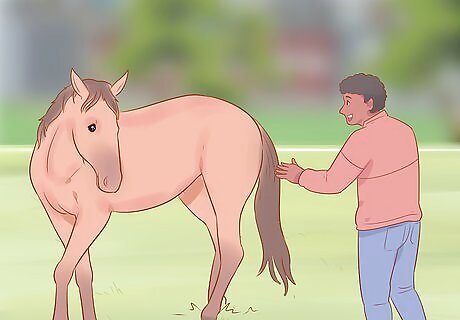
Speak in a soft voice to let them know your presence. Horses will scare easily if they hear yelling, or even loud, overexcited talking. As you are walking towards the horse you want to meet, speak to it in a soft voice. You can greet it by saying “hi” and its name. It doesn’t matter what you say, as long as you use a soft, gentle voice. Once a horse gets familiar with you, it may accept louder talking. But this takes some time.

Avoid eye contact and sudden movements that will frighten the horse. When walking up to the horse, move at a slow, steady pace. Then stop at a short distance from the horse and let it look at you for a few seconds. Stay as still as possible, not moving your arms. Additionally, don't make any loud noises. While the horse is getting familiar with what you look like, avoid looking at it directly in the eye. Horses may view eye contact as a signal of dominance or aggression.
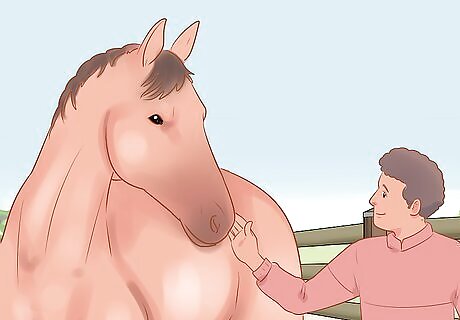
Allow the horse to smell your hand. As you are approaching the horse, hold out your hands and let it sniff your fingers. This is important, as horses use their sense of smell to determine potential threats. Let it sniff for as long as it needs to. You'll know your horse finished sniffing when it puts its head up. If it's windy outside, your horse may have trouble distinguishing smells. Be cautious, as the horse may be anxious if it's not able to catch a scent.
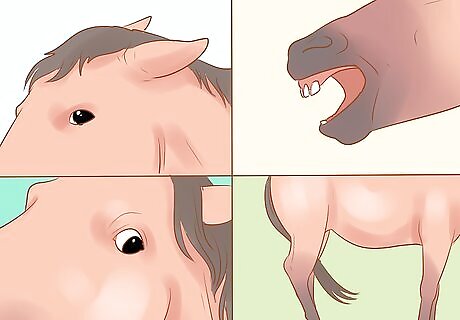
Watch the horse's body language to avoid aggressive behavior. Some horses may not let you approach them, and that is okay. It is important that you are safe. A frightened horse may kick, bite, or run. Keep your distance if your horse is showing the following signs: Ears pinned straight back Flared nostrils Eyes opened wide with white part showing Tail clamped between the legs
Bonding with a Horse
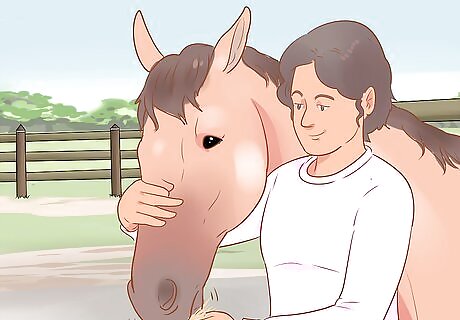
Offer the horse a treat. Horses will enjoy most fruits and vegetables as a treat. Apples and carrots are usually a favorite for horses, as well as strawberries, cantaloupe, celery, and bananas. One or two pieces are usually enough. When you feed them, put the pieces on your hand with your fingers together and flat. You do not want to risk the horse biting your fingers. Make sure you cut the food into small pieces. If a horse swallows large chunks, it may be at risk of choking. Make sure you have prior permission from the horse’s owner to give it a treat. Some horses may have a medical condition that prohibits them from having fruits, vegetables, or grains. Only offer food to one horse at a time. Do not try to feed while in a group surrounded by horses. This puts you in a dangerous position.
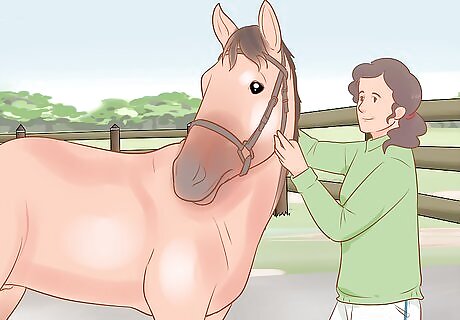
Gently pet the horse on the shoulder and neck. Once the horse is able to sniff you and take a treat, slowly begin rubbing it on the shoulder and side of the neck. Stroke the horse with an open hand, and in a rhythmical fashion. Do not scratch with your fingers. Do not go straight for the nose or face, it may become startled and pull its head back. It will take time for your horse to trust you and allow you to touch its face.
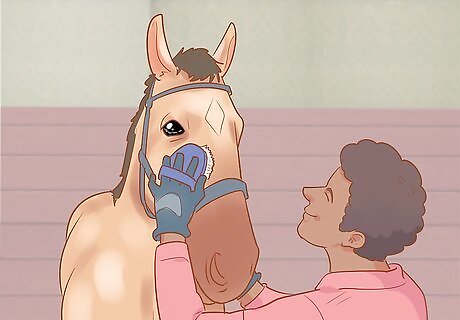
Brush the horse’s mane. Horses love having their manes brushed and stroked. It feels good to them, and it helps to get out any knots. Use a brush especially designed for horses, and brush starting from the top and pull down. Avoid brushing the horse’s tail if this is your first time interacting with it. If you feel confident enough to brush its tail, do not stand directly behind it. Stand on the side of the horse, and bring the tail over and in front of you to brush it. You can also try braiding the horse’s hair.
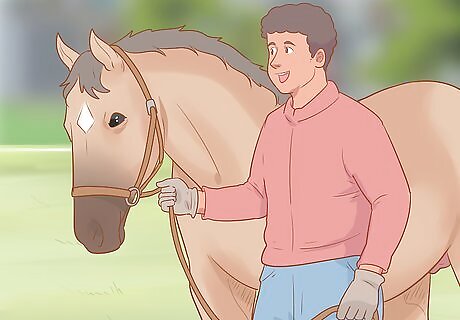
Go on a walk with the horse for some one-on-one time. Once you are certain your horse trusts you, lead it on a walk. Since this is your first time with the horse, stay in an enclosed area and just start by walking in a large circle. Make sure the horse is wearing a halter with a rope attached so that you can hold on to it. Keep your energy low and walk slowly. Constantly monitor your horse’s behavior to ensure that it is comfortable. If you see it getting spooked, move to a safe distance to avoid getting hit or kicked. Do not pull the horse or walk in front of it. Always stay next to it by its shoulder, keeping the rope loose.




















Comments
0 comment